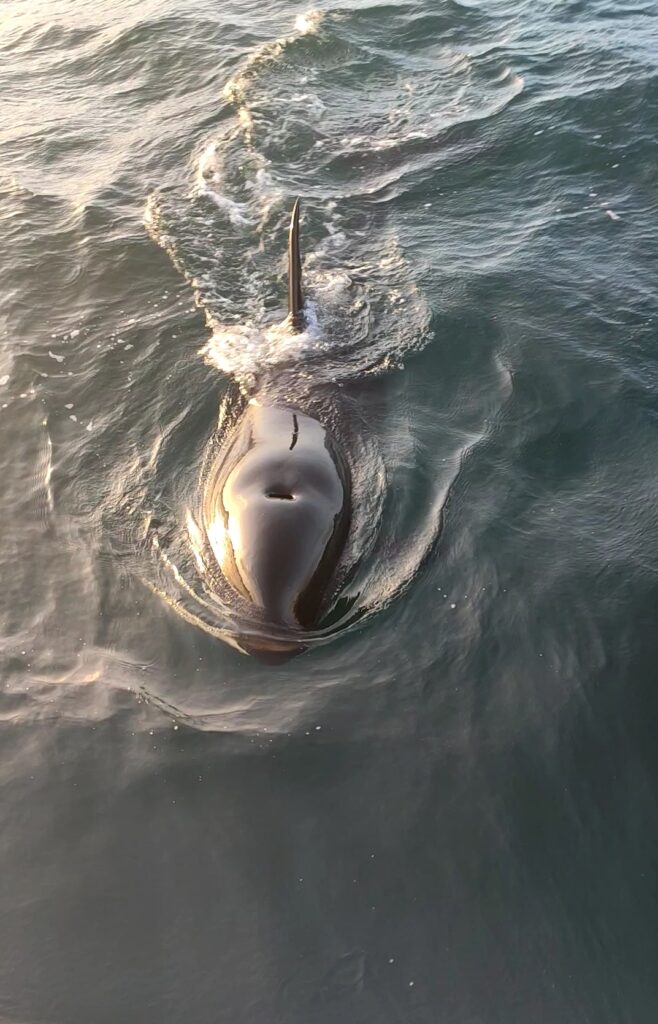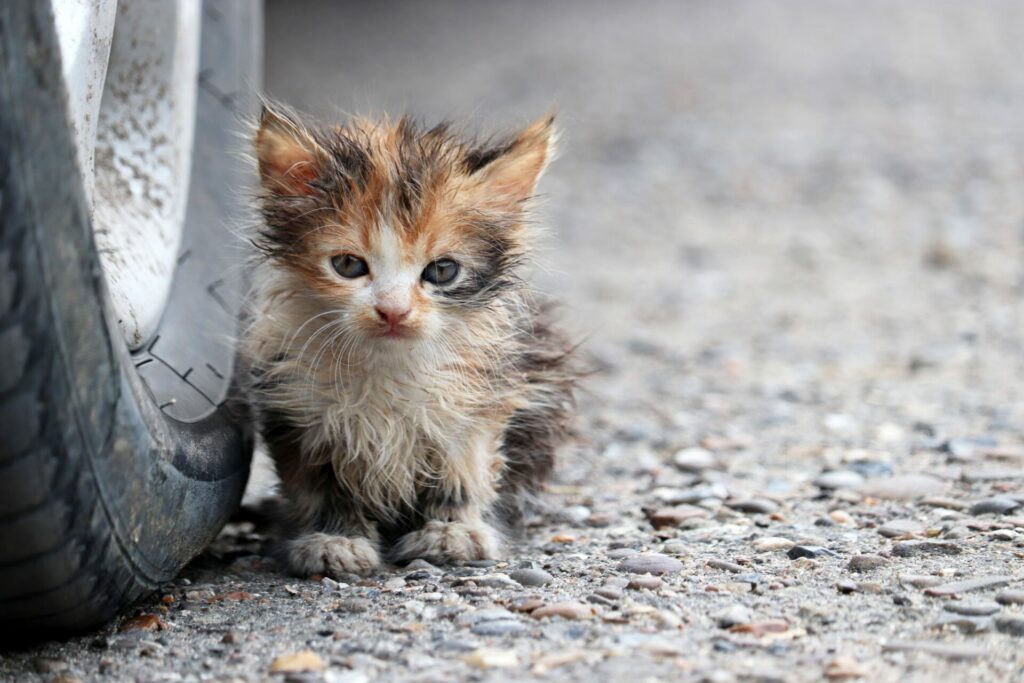For the fisherman and sailors around the southern Iberian Peninsula it was disconcerting. Not only did they have the global pandemic to worry about – but suddenly a small family of killer whales had begun to act strangely.
In the waters around the southern coasts of Portugal, in the Gulf of Cadiz and through the Straits of Gibraltar the juveniles within the group began to ‘attack’ boats.
The behaviour was new and puzzling, and for the crew on the boats, it was even dangerous. The killer whales seemed to target sailboats but, in some cases, picked out fishing vessels. The incidents appeared premeditated and coordinated.
Killer Whales

The incidents increased. Between July and November 2020, 52 events were reported between the Strait of Gibraltar and Galicia in north western Spain.
The following year, they increased to 239 recorded up to November 2021, mainly around the Strait of Gibraltar and up the coast of Portugal, although there were also interactions in Morocco and France.
The killer whales have sunk at least five boats and are now so well-known that sailors now call the route between southern Spain and North Africa ‘Orca Alley’
In 2022 there were 207 incidents. Some were minor skirmishes, but others left boats incapacitated, with crews in need of rescue. And they’re still continuing.
To date the orcas have sunk at least five boats and are now so well-known among sailors that the route through the bottleneck between southern Spain and North Africa has been named Orca Alley. There is an app for reporting attacks and a live map to tell boats where the offending orcas are.
Revenge Or A Game?
Early theories and media headlines suggested the intent was malevolent, and that whales were purposely attacking boats. One theory suggested that one of the mature members of the group had suffered a boat-strike injury and the younger whales were avenging their friend.
Experts dismiss these theories and encourage reporters to refer to the engagements as ‘interactions’ and not attacks.
In nature, sensationalism costs lives. The film Jaws, for example, had a huge impact on how humans perceived sharks and since its release the numbers of sharks and rays have declined by 71 per cent. Orcas are a protected species and in August this year, an open letter signed by 32 of the world’s top experts in marine biology and whale and dolphin behaviour called for accuracy.
The authors, led by Dr Naomi Rose, senior scientist in Marine Mammal Biology at the USA’s Animal Welfare Institute, wrote: ‘We are concerned that factual errors relating to these interactions are being repeated in the media, along with a narrative lacking a basis in science or reality, that the animals are aggressively attacking vessels or seeking revenge against mariners.’
The group voiced concerns that some who believe the attack theories will start ‘punitive responses’. They explain that during the interactions the whales have shown a range of behaviours, many of which are consistent with ‘playful social behaviour’.
‘People say it’s not an attack, it’s an interaction, but these things were ramming my boat hard. It wasn’t an orca brushing against the boat, they knew what they were doing’
One of the first seamen to experience this bizarre orca interaction was British yacht skipper David Smith. He was delivering a boat to its new owner in October 2020 and was sailing down the coast of Portugal, around 25 miles off the coast of Porto heading towards Gibraltar, when he noticed several orcas following his boat.
He tells The Ethicalist: ‘We were making good progress. The owner’s wife was with us. She looked out and called “look, a dolphin”. I’d only ever seen one orca in an aquarium in Vancouver, but I could see these were killer whales. There were about half a dozen of them following the boat.’
After earlier interactions, vessels in the area were advised to lower their sails to make themselves appear less interesting. David did, and the boat stopped moving. That’s when the orcas started ramming.

‘People say it’s not an attack, it’s an interaction, but these things were ramming my boat hard. It wasn’t an orca brushing against the boat, they knew what they were doing,’ he says.
‘It was sustained, and we didn’t know how or when it would end. The hull on the boat was thick but the vulnerable bit was the rudder stock, which is a tube where the rudder goes through the hull up to the steering wheel. If that got breached there would have been a five-inch hole under the boat and we would have started to sink.’
‘We are getting attacked here, I don’t know how this is going to go down, but we are surrounded by apex predators. If this goes badly, I need a helicopter overhead’
The orcas made repeated forays at the vessel. ‘As they came in towards the boat they rolled over at the last second to protect their dorsal fins, presenting their underside to us. In the sea most things are just a shade of grey and what really struck me were these flashes of black and white as the orcas went under the boat and rammed us.’
David called the coast guard. ‘I said: “We are getting attacked here, I don’t know how this is going to go down, but we are surrounded by apex predators. If this goes really badly, I need a helicopter overhead.”’
Eventually, after two nerve-jangling hours, and after the sun had set, David noticed a large fishing trawler in the distance with its deck lights on. He devised a plan.
He explains: ‘I thought the one thing I could do was start sailing towards it because if we did start to sink at least we could get help. We started moving and the rams became less frequent and after 15 minutes stopped altogether.’
A video of the incident got over 2.5m views and David says it would be foolish to try and work out what the killer whales were thinking.

He explains that since the attack he has heard of several techniques being used to try and discourage the orcas. ‘Pingers’ which emit sounds and are used by fishing trawlers to stop dolphins getting caught in their nets can be effective. Another method involves throwing buckets of sand in the water. ‘Orcas hunt using sonar and the sand disrupts their sonar signals,’ David explains.
There are reports of boats using firecrackers too, which is illegal.
Despite the assertions that these are not attacks, as the interactions have increased in frequency, boat owners in the region have become nervous. ‘I was talking to some boat owners in Cascais in Portugal recently and they are terrified of taking their boats out,’ says David. ‘I’ve been through the area since and I keep my fingers crossed but I think we were just unlucky that we got singled out.’
There are two distinct types of orcas, which have been captured and displayed as entertainment in aquariums and aquatic theme parks throughout the world since the 1960s as they are particularly intelligent, playfulness and easy to train. Transient orcas eat warm blooded mammals, such as seals. But the type involved in the interactions are resident orcas which eat tuna and follow the tuna’s migration route through the Mediterranean and up the Atlantic coast. There are no recorded incidents of orcas killing humans in the wild.
So, what is happening in Orca Alley and why is this distinct group of Iberian orcas so interested in boats? Since David’s experience, the family involved have been studied by experts and one theory that has gained traction is that they have learned the behaviour and are playing.
Alfredo López Fernández, an orca researcher at the Atlantic Orca Working Group (GTOA), which is monitoring the group, says that our own perception of the behaviour may be biased as what feels like a ramming may just be the orca moving the boat or rudder with their heads and bodies ‘because they cannot hold things with their fingers’.
And a research project by orca specialist Renaud de Stephanis, who has been studying Iberian orcas since the 1990s and is the coordinator and president of Conservation, Information and Research on Cetaceans (CIRCE), reinforces the play theory. The study involved giving the wild orcas dummy rudders and filming them. The film revealed that rather than biting the rudders, the orcas pushed them with their noses until they broke.
Playing A Game
‘They’re pushing, pushing, pushing – boom! It’s a game. Imagine a kid of six, seven years, with a weight of three tonnes. That’s it, nothing less, nothing more,’ de Stephanis told the BBC. ‘If they wanted to wreck the boat, they would break it in 10 minutes.’
According to the experts who authored the open letter, to date at least 11 juveniles and four adult females have been identified as participating in or observing this behaviour.
Experts believe the orcas may be following a craze, much as humans do. Indeed dolphins have been known to develop cultural ‘fads’ such as swimming around with dead fish on their heads. These fads die out
‘There is no evidence of an identifiable ‘leader’ of these interactions,’ the group states. They also point out that the lack of teeth marks left on boat parts suggests the whales are not ripping the rudders apart, ‘as they might if this were hunting behaviour’.
The group continues: ‘While the behaviour may be frightening (and costly) from a human perspective, from the whales’ perspective, it seems to be somehow gratifying.’
Orca Fad
The experts believe that the orcas may be following a craze, much as humans do. Indeed other dolphin communities have been known to develop cultural ‘fads’ such as swimming around with dead fish on their heads. These novel behaviours briefly persist and expand within a population and much like human crazes, the experts predict the behaviour may simply die out of its own accord.
They write: ‘While these vessel interactions may be a similar phenomenon, they are persisting longer than typical fad behaviour, expanding within the population and escalating in impact. Nevertheless, it is possible the behaviour, as previous fads have, will disappear as suddenly as it appeared.’
While science cannot yet explain this never-seen-before behaviour, the experts agree that it is more likely related to play and socialising than aggression, all of which gives some comfort to yachtsmen who find themselves the subject of unwanted orca attention.













